Jammu Kashmir – Culture and Tradition
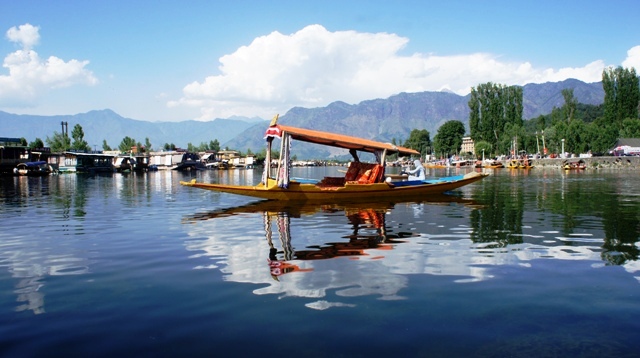
The state of Jammu & Kashmir has always been a disputed land since the Independence of India. J&K is the reason for the conflict between India, Pakistan, and China. Jammu and Kashmir also called the Venice of East. Since its formation, J&K is a center of Extremist and Separatists powers.
The region has been violently disputed by India and Pakistan since its 1947 partition. China, too, which borders the region to the north and east, has been involved in these conflicts. The Indian portion of Kashmir is called Jammu and Kashmir and it’s capital in Srinagar. The Pakistani-controlled part of the region is called Azad Kashmir and its capital is Muzaffarabad.
Though, some of the time this state is closed down due to curfew, tourists still flock to the place to enjoy the natural beauty and the pleasant climate. This is why it is called the Switzerland of India.
The capital of Jammu & Kashmir in summer is Srinagar (March – October) and in winter the capital is Jammu (October – March).
History
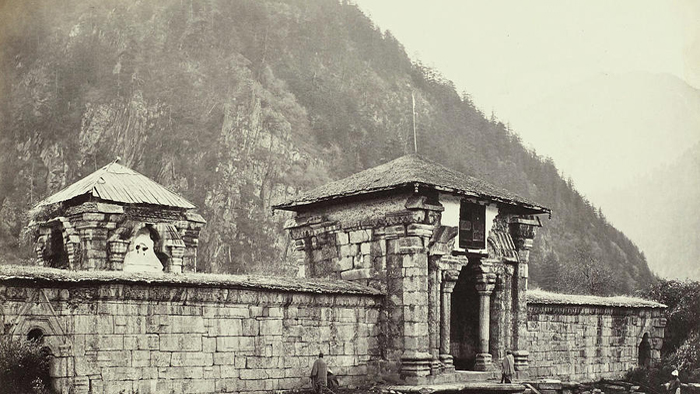
The history of Kashmir started just before the great Mahabharat war. The first ruler of Kashmir was Gonanda, Gonanda was killed in a battle along with his son and at the time of the commencement of the Mahabharat war, Gonanda II was ruling over Kashmir. Ashoka founded the old city of Srinagar known now as “Pandrethan”. After the death of Ashoka, his son Jaluka ascended the throne of Kashmir, and the latter was succeeded by his son King Damodar II.
The valley for over two hundred years was ruled by Indo-Greek Kings before the start of the “Turushka” (Kushan) rule in the state. The contact with the Greeks is responsible for the beautiful architectural and sculptural style of old Kashmir temples. Khemgupta ascended the throne of Kashmir in 950. The last Hindu ruler of Kashmir was Udayan Dev. Before his death, he embraced Islam. His death in 1339 paved the way for the establishment of Muslim rule in Kashmir.
Then Kashmir was ruled by Muslims and Mughal respectively. The Mughal rulers never came alone but were always accompanied by hundreds of Nobles, Amirs and Umrah, Princes, and Army Generals. Then came the Afghan Rule and the Dogra Period, The greatest service of the first Dogra ruler is the foundation that he laid for the modern Jammu and Kashmir State.
When India got freedom in 1947 Hari Singh the Maharaja of Jammu and Kashmir, wanted his state to remain independent, and have two options either to include their state in India or in Pakistan, Hari Singh took a long time to make this decision. At the same time, Kashmiri (Muslim majority population) on the Pakistan side opened a front against Hari Singh. To deal with the rebellion, Hari Singh sought the help of the Indian Army and agreed to merge his kingdom in India.
The land was divided into two parts- India and Pakistan. The Indian side of Kashmir is called Jammu and Kashmir and the Pakistani-controlled part of the region is called Azad Kashmir.
Culture and Tradition of Jammu Kashmir
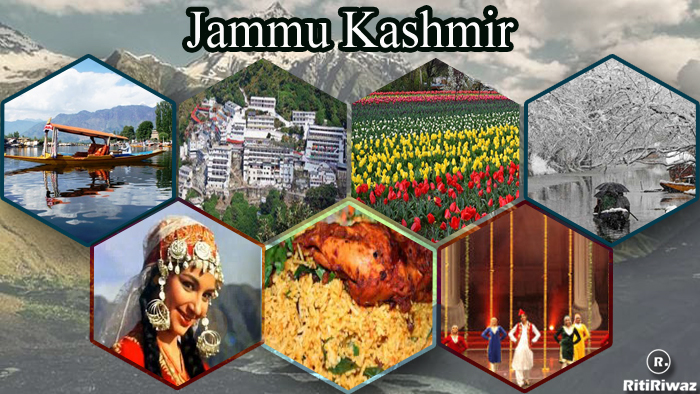
Jammu Kashmir is a diverse blend of various cultures People from different religious and social practices of Muslim, Hindu, Sikh, and Buddhist have created a composite culture of the state which is called Kashmiriyat. Kashmiri comprises of Kashmiri Pundits, Kashmiri Muslims, Gurjars, and Rajasthani Rajputs.
Kashmiri Weddings traditions are full of joyful and traditional ceremonies. Emphasis is also laid into matching the background, status, and reputation of the family of the prospective match.
Costumes of Jammu Kashmir
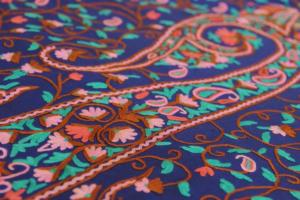
Costumes of Jammu and Kashmir are well known for their embroidery and intricate designs, which reflect the richness of the culture and landscape of the region. The form of clothing is designed to counter the cold climate of the region. Most of the garments are made of wool, silk designed with intricate embroideries and cotton.
The Pheran is a prominent attire for Kashmiri women. The Pheran is worn by women usually has Zari, embroidery on the hemline, around pockets, and mostly on the collar area. Ladies prefer a suit and Burgha in summer and Pheran are preferred in autumn.
The typical dress of a Kashmiris man both Hindu and Muslim is Pheran, a long loose gown hanging down below the knees. The men wear a skullcap, a close-fitting shalwar (Muslims), or churidar pyjama (Pandits).
Suggested Read: Carpets of Jammu and Kashmir
Cuisines in Jammu Kashmir

Kashmiri food is a blend of Kashmiri Pandits, Muslims, and Mughals styles. The Dogras are Hindu, so they are mainly vegetarian, eating a staple of rice, wheat, and beans. They take plenty of vegetables but the favorite dish is the hak or karam sag. In the cities, mutton is consumed in large quantities but in the villages, it is still a luxury reserved only for festive occasions. Beef is forbidden to Hindus.
Kashmiri food is meat-based, slowly cooked for a long time with many exotic spices. Although they are the inhabitants of a cold country, Kashmiris abhor the use of intoxicating drinks. The traditional green tea with spices and almonds known as Kahva is consumed during the winters of Kashmir. A Kashmiri meal ends with a cup of ‘kahva’.
Kashmiri Pulao is a common dish for Kashmiri vegetarians other dishes are Dum Olav/Dun Aloo, Karam sag, and Nadier Palak. Also, spices, curd, and condiments are common ingredients of Kashmiri cuisine. Phirni is a sweet delicacy of Jammu and Kashmir.
Music and Dances of Jammu Kashmir
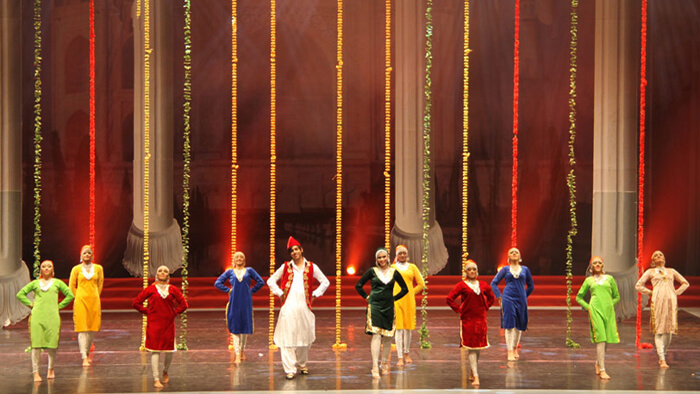
Due to Kashmir’s close proximity to Central Asia, Eastern Asia, and Southern Asia, a unique blend of music has evolved encompassing the music of the three regions.
But, overall, Kashmiri Valley music is closer to Central Asian music, using traditional Central Asian instruments and musical scales, while music from Jammu is similar to that of North India.
The Dumhal is a famous dance in the Kashmir valley, performed by men of the Wattal region. The women perform the Rouff, another traditional folk dance.
Famous tourist attraction
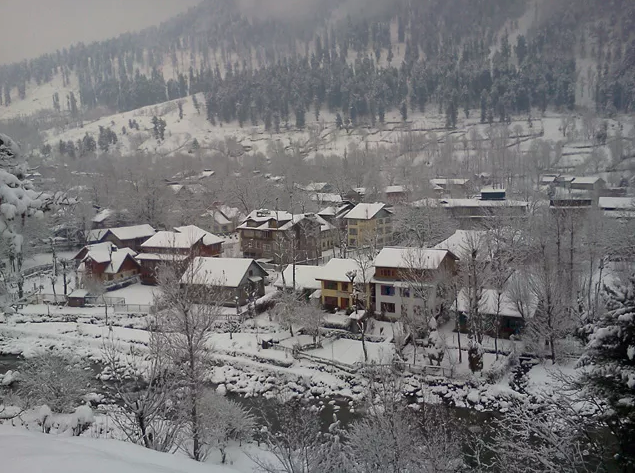
In Jammu and Kashmir, the most important tourist places are the Kashmir Valley, Srinagar, the Mughal Gardens, Gulmarg, Pahalgam, Jammu. Some areas require a special permit for non-Indians to visit.
The tourism economy in the Kashmir valley was the worst hit due to militancy in the state. However, the holy shrines of Jammu continue to remain popular pilgrimage and tourism destinations.
Every year, thousands of Hindu pilgrims visit the holy shrines of Vaishno Devi and Amarnath which has had a significant impact on the state’s economy.






